
Road Runner is a racing video game based on the Wile E. Coyote and Road Runner shorts. It was released in arcades by Atari Games in 1985.

Shoot-'Em-Up Construction Kit is a game creation system for the Commodore 64, Amiga and Atari ST created by Sensible Software and published by Outlaw in 1987. It allows the user to make simple shoot 'em ups by drawing sprites and backgrounds and editing attack patterns. The advertising promoted the Kit with the phrase "By the programmers of Wizball and Parallax".

Ace of Aces is a combat flight simulation game developed by Artech Digital Entertainment and published in 1986 by Accolade in North America and U.S. Gold in Europe. It was released for the Amstrad CPC, Atari 8-bit computers, Atari 7800, Commodore 64, MSX, MS-DOS, Master System, and ZX Spectrum. Set in World War II, the player flies a RAF Mosquito long range fighter-bomber equipped with rockets, bombs and a cannon. Missions include destroying German fighter planes, bombers, V-1 flying bombs, U-boats, and trains. In 1988, Atari Corporation released a version on cartridge for Atari 8-bit computers styled for the then-new Atari XEGS.
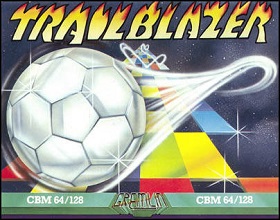
Trailblazer is a racing video game developed by Mr. Chip Software and published by Gremlin Graphics for the ZX Spectrum, Commodore 64, Atari 8-bit computers, Amstrad CPC, Commodore 16 and Plus/4 in 1986. It was ported to the Amiga and Atari ST.

Bomb Jack is a platform game published by Tehkan for arcades and later ported to home systems. The game was a commercial success for arcades and home computers. It was followed by several sequels: the console and computer game Mighty Bomb Jack, the arcade game Bomb Jack Twin, and Bomb Jack II which was licensed for home computers only.

Time Bandit is a maze shoot 'em up written for the TRS-80 Model I by Bill Dunlevy and Harry Lafnear and published by MichTron in 1983. It was ported to the TRS-80 Color Computer and Dragon 32, but enjoyed its greatest popularity several years later as an early release for the Atari ST. It was also released for the pseudo-PC-compatible Sanyo MBC-55x with 8-color display. Amiga and MS-DOS versions were ported by Timothy Purves.
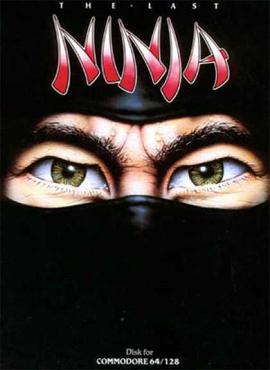
The Last Ninja is an action-adventure game developed and published by System 3 in 1987 for the Commodore 64. It was converted to the Apple IIGS, MS-DOS, BBC Micro and Acorn Electron in 1988, the Apple II in 1989, the Amiga and Atari ST in 1990, and the Acorn Archimedes in 1991.
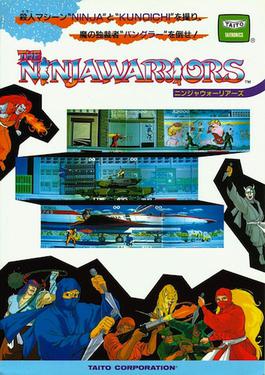
The Ninja Warriors (ニンジャウォーリアーズ) is a side-scrolling beat 'em up video game developed and released by Taito in 1987. The original arcade game situated one display in between projected images of two other displays, creating the appearance of a triple-wide screen. Ports were released for home systems including the Amiga, Atari ST, ZX Spectrum, Commodore 64, Amstrad CPC, PC Engine, and Sega Mega-CD.
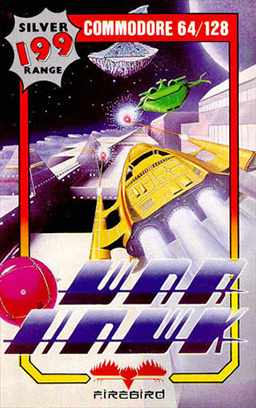
Warhawk is a vertically scrolling shooter published in 1986 by Firebird Software. It was released for the Commodore 64, Atari 8-bit computers, Amstrad CPC, and Atari ST.

Enduro Racer (エンデューロレーサー) is an arcade racing game from Sega. It was released in 1986 with two arcade cabinet versions, a stand-up cabinet with handlebars and a full-sized dirt bike cabinet. It is often seen as a dirt racing version of Hang-On, as it uses a similar engine and PCB. The game was later released for the Master System in 1987, the ZX Spectrum and Commodore 64 in 1988, and the Amstrad CPC and Atari ST in 1989.

Black Lamp is a platform game, originally published by Firebird Software for the Amiga, Atari ST, Commodore 64 and ZX Spectrum computers in 1988, and later published by Atari Corporation for the Atari 8-bit computers in 1989.

Panther is a Commodore 64 game designed and implemented by Peter Adams and published by Mastertronic in 1986. A version for Atari 8-bit computers followed in 1987, then a ZX Spectrum port in 1989. The player pilots a strange-looking aircraft, fighting off hordes of invading flying saucers and rescuing people by landing the craft and waiting for them to board. The game uses a diagonally scrolling isometric view, much like Zaxxon and Blue Max, using shadows to show the height of flying objects. Adams previously worked on ports of both of those games.

Barbarian II: The Dungeon of Drax is a video game first published in 1988 for various home computers. It was released as Axe of Rage in North America. The game is the sequel to Barbarian: The Ultimate Warrior, which was published in 1987. In Barbarian II, the player controls a princess or barbarian character, exploring the game world to locate and defeat an evil wizard. The game's plot is an extension of its predecessor, although the gameplay is different. While the first game offers two players the opportunity for virtual head-to-head combat, the second is a single-player beat 'em up with fewer fighting moves. It uses a flip-screen style instead of scrolling.

Leader Board is a series of golf simulation video games that was developed by Bruce Carver and Roger Carver, and published by Access Software.
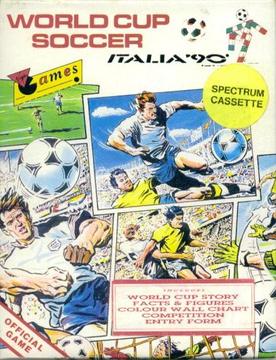
World Cup Soccer: Italia '90 is a football video game released for various home computers in 1990 by Virgin Mastertronic. It is the officially licensed game of the tournament. It was known simply as Italia '90 for the Tronix budget reissues.
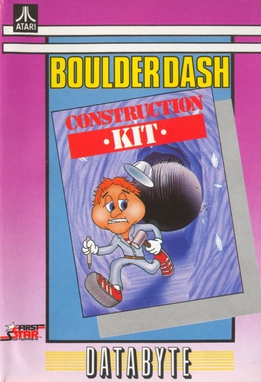
Boulder Dash Construction Kit is the fourth game in the Boulder Dash series. It was published for the Commodore 64 and Atari 8-bit computers in 1986 by Epyx. Ports were released for the Apple II, Atari ST, Amiga, Amstrad CPC, ZX Spectrum, and MS-DOS. The Spectrum version was rereleased as Boulder Dash IV: The Game. Boulder Dash Construction Kit includes new levels and a level editor.

Judge Dredd is a 1991 platform shoot 'em up video game based on the character of the same name. It was developed by Random Access and published by Virgin Mastertronic. It was released in Europe in 1991, for the Amiga, Atari ST, Commodore 64, and ZX Spectrum. Critics found the gameplay repetitive.
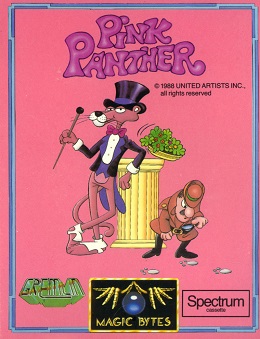
Pink Panther is a 1988 video game based on the character of the same name. It was developed by German company Magic Bytes and published by Gremlin Graphics. It was released in Europe for Amiga, Amstrad CPC, Atari ST, Commodore 64, and ZX Spectrum. Pink Panther was criticized for its control and difficulty, although the Amiga and Atari ST versions received praise for their graphics.

Kikstart: Off-Road Simulator is a racing game designed by Shaun Southern and published by Mastertronic in 1985 for the Commodore 64. Ports for Commodore 16 / Plus/4 and Atari 8-bit computers followed in 1986, and a sequel, Kikstart 2, in 1987.
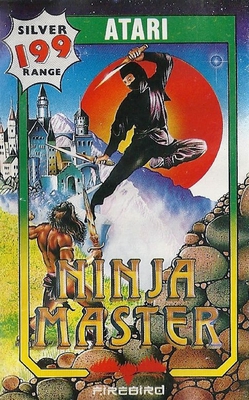
Ninja Master is an action game depicting ninja training which was published in 1986 for various 8-bit home computers by the Firebird Software silver label. The game was developed by Tron Software and was poorly received by reviewers. A sequel, Oriental Hero, was developed by the same company and released in 1987.





















